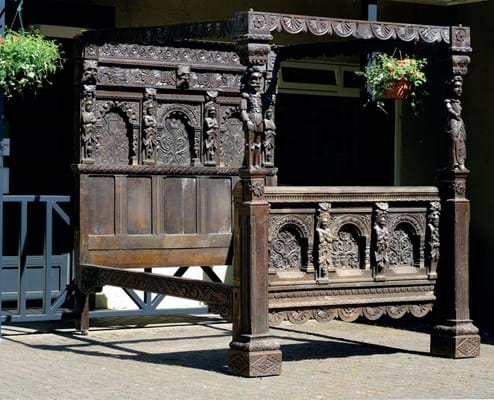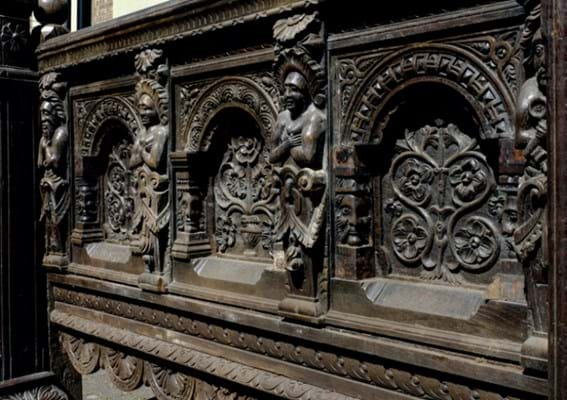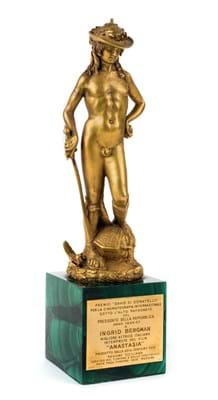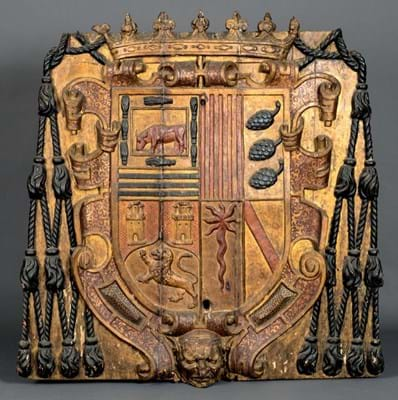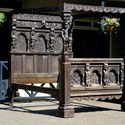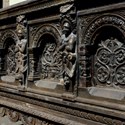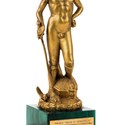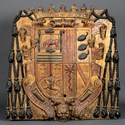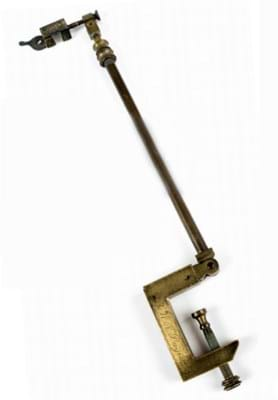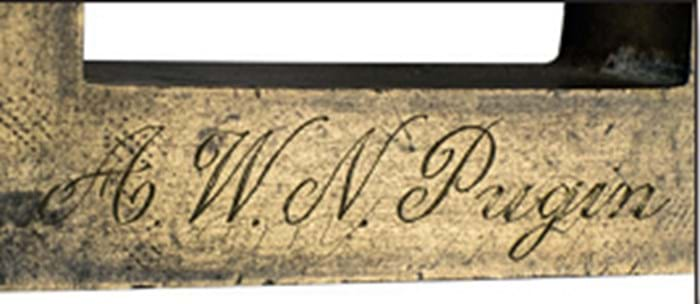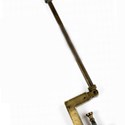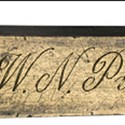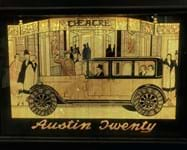For the past few years auctioneer Henry Meadows has been holding three sales annually at the South Cerney rooms offering material across the spectrum with growing success – as evidenced by the June 15 sale when 80% of the 550 lots got away to a total of £283,000.
The move beyond the auctioneers’ traditional field was something of an organic one. In the nature of things, consignors of a library of books would often want to dispose of a library table, say, or a pair of globes.
“We were sending a lot of clients off to other auction houses, which was great for them, but as we have the facilities to offer a service it makes good business sense to have these sales,” said Meadows.
Film award
The variety across a sale assembled from local vendors was exemplified by the top-seller, an Italian film industry award.
Recognising that their awards would not have the same status as the Oscars, the Italians decided that at least their statuettes would be superior to the ones produced at around $400 a time for Hollywood.
They called them the David di Donatello Awards and from 1955-60 had them made by Bulgari – 10½in (27cm) tall, 18ct gold figures of Donatello’s David standing on malachite bases.
The 1957 Best Foreign Actress Award, which went to Ingrid Bergman, turned up at the June Dominic Winter sale. Initially, photographic evidence of the divine Ingrid with the trophy prompted a question as to whether the trophy was the real thing.
However, a provenance to theatrical agent Laurence Evans, the star’s great friend, and laser-testing of both the statuette and plaque as 18ct gold, allowed the auctioneers to offer it as original.
Certainly that was good enough for the bidders: against an estimated of £4000-6000, the trophy sold at £30,000 to a private buyer.
Bed with star value
Oddly enough, the top-seller among the antiques proper also had showbiz connections – a 17th century and later tester bed consigned by the vendor who had bought it from British actor Lawrence Harvey.
Further back it is believed it had belonged to the US publishing magnate Randolph Hearst, possibly bought when he was scouring Britain for pieces to furnish the medieval Glamorgan castle he bought in 1925.
The appeal of the 7ft 10in high x 6ft 1in wide x 7ft 8in deep (2.39 x 1.86 x 2.34m) bed, however, lay less in past owners than the quality of the carving to the guilloche-carved headboard and the faces of the Green Man and caryatids to the panels, footboard and bed posts.
The large canopy was carved 1674 but, as with almost every tester bed, alterations had been made over the years. Iron bolts were clearly not original. “Attention by a carpenter will be required,” noted the catalogue. Nevertheless, the bed, estimated at £5000-8000, sold at £14,000.
“I don’t think the bed’s history affected the bidding,” said Meadows. “Just two private bidders battling it out.”
From earlier in the 17th century came a 16in x 2ft ½in (41 x 62cm) walnut-framed stumpwork linen panel. Dated to the early 1640s, it showed Charles I, Queen Henrietta Maria, a child and ladies-in-waiting by a flower-filled urn and surrounded by symbolic motifs including an oak tree, shepherds, castles, animals and mythological creatures.
It displayed pretty much the gamut of stitching types and although some of the metal threads, polychrome beads and sequins were slightly discoloured with age, sold near the top estimate at £4800 to a collector.
Of similar decorative appeal, was an 18th century shield-shaped family armorial.
Measuring 4ft 6in x 4ft 2in (1.37 x 1.28m) the planked carved oak was decorated with applied gesso work with a cow, turrets, lion and other devices surmounted by a coronet with rope tassels.
A continental – probably Spanish – work, it was estimated at £700- 1000 and sold to the trade at £4800.
Out of the ordinary lot
Oddities caught the eye. A 12in (30cm) long Victorian brass camera lucida came with a powerful provenance. These artist’s aides, which reflected rays of light through a prism to produce an image on a sheet of paper, are common – but this one was engraved AWN Pugin.
By repute it was given to the vendor’s ancestor, who had nursed the great architect-designer and pioneer of the Victorian Gothic movement.
This was enough to propel the piece estimated at £500-800 to £3200, selling to a private buyer.
No wide-ranging sale being complete without a Far Eastern piece, mention should be made of a gilded bronze head of Buddha from Thailand’s 15th-16th century Ayutthaya Period.
With a solid provenance, the 15in (38cm) piece sold to a Chinese buyer at an above-estimate £3600.


